Anemones: daisy, buttercup or margarita?
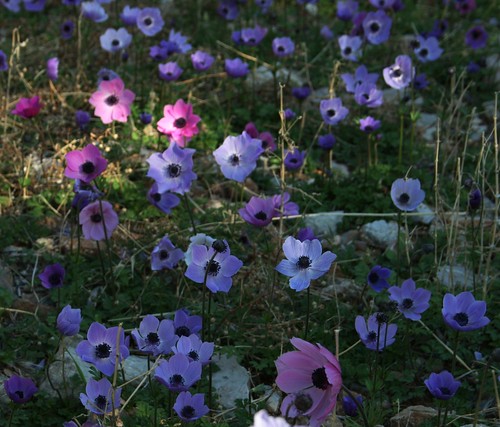
The brightly coloured anemones growing around Paleochora from December to May belong to the plant family Ranunculaceae, also known as the ‘Buttercup Family’. Under this ‘family’ heading other familiar common names of plants include the: clematis, delphinium, nigella as well as the ‘buttercup-type’ flower. The range and types of flowers which are grouped under Ranunculaceae may seem very different but in the scientific system, plants are classified by dividing them into groups, which have similar characteristics. These groups are then divided into smaller groups with similar characteristics. These are divided again and so the division of group to sub group and sub group to further sub groups goes on, until you finally have only one type of plant in each group.
There are many different levels of division, although the main ones which are used on a day to day basis are at the bottom end of the scale i.e. family, genus, species and these groupings will be used.
This Botany Blog will aim to inform people about the flora of Paleochora as well as other areas of Crete and different types of habitats such as high altitude flora, sandy dunes etc. and rather than just add names to photographs of flowers I will delve into any interesting aspects of the flowers, such as: medicinal, historical, mythology etc.
Staying with the Buttercup Family (Ranunculaceae) and using the examples above would be a good introduction as to the variety of plants that are encompassed within the Buttercup Family.

Anemone coronaria
The Mediterranean Anemone coronaria , crown or poppy anemone, is a very common plant of olive groves, fallow and abandoned fields around Paleochora. The flowers come in various colours, including violet, blue, mauve, purple, bright red and white and are often in mixed populations of two or more colours. Flowering can begin as early as December and continue until May, by which month, only the fluffy seed heads remain to indicate the sites of earlier splendid displays. Anemone coronaria approaches its upper altitudinal limit in the fields of the Omalos plateau at 1050 m. The resemblance of the name anemone to Greek anemos (wind) has led to the coining of the English name ‘windflower’ for these plants, though they have no more special association with the wind than other plants of open places.
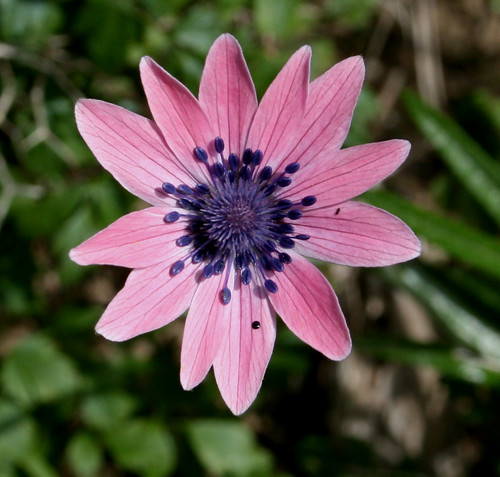
Pink form of Anemone hortensis subsp. heldreichii
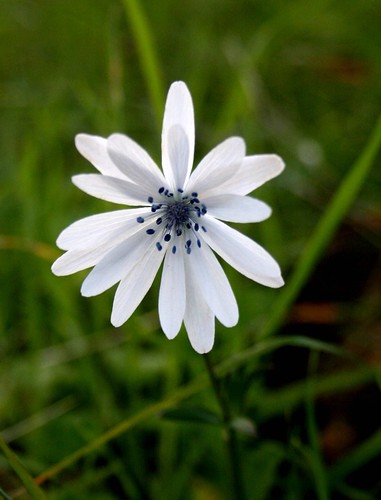
Anemone hortensis subsp. heldreichii
Anemone hortensis subsp. heldreichii flowers at the same time and may grow in the same places as A. coronaria. It is a smaller plant and the flowers have many narrow, white or bluish white perianth segments, although pale to deep pink or bright magenta forms also occur.
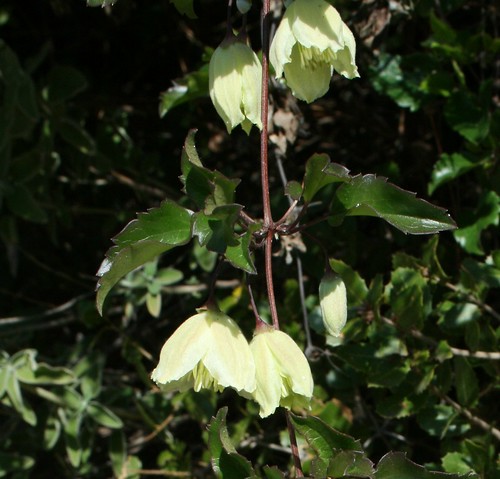
Clematis cirrhosa
Clematis cirrhosa , also known as the virgin’s bower, is a climbing, Mediterranean evergreen shrub widespread in woodland, scrub, rocky places and old dry-stone walls up to 750 m. The pendulous, greenish white flowers appear from October to February, or sometimes until April. The common name is virgin’s bower although it usually refers to any of several usually small-flowered and climbing clematises (especially Clematis virginiana).
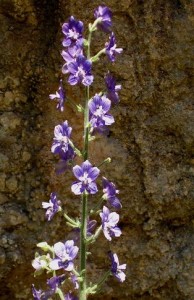
Delphinium staphisagria
Delphinium staphisagria, lice-bane, is locally abundant in Western Crete, in woodland, rocky gorge beds, rocky places near streams and among ruined buildings up to 800 m. It is a tall annual (to about 1 m) with palmately lobed leaves and erect racemes of dirty purple to deep blue flowers from April to June. More details of its medicinal properties can be found in at: http://botanical.com/botanical/mgmh/s/stavas90.html
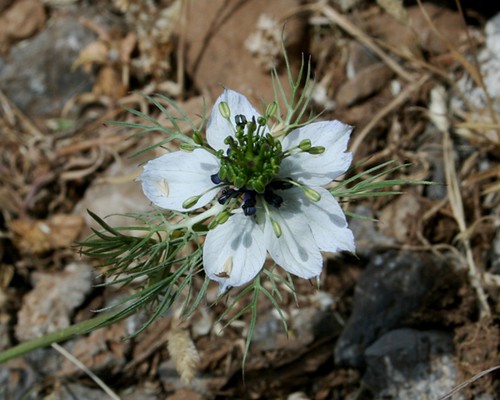
Nigella damascena
Nigella damascena is a spring-flowering annual of olive groves and rocky places up to 1200 m and is common both in and around Paleochora and in western and central Crete. The genus name Nigella comes from the Latin niger (black), referring to the intense black seeds. The flowers are usually bluish. Ornamental breeds of the closely related species N. damascena are known as Devil in the bush or Love in a mist; in German, there are comparably poetic names like Jungfer im Grünen (Love in the Green).
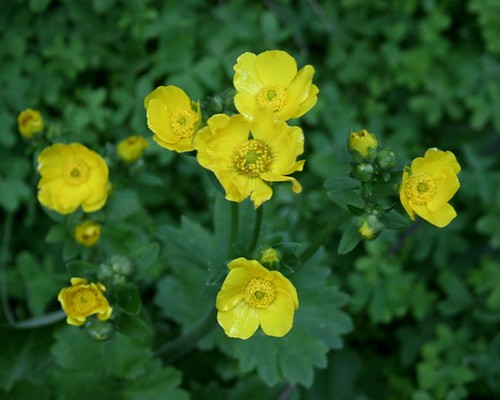
Ranunculus creticus
Ranunculus creticus, Cretan buttercup is an attractive, distinctive and widespread plant of cliffs and shady, rocky places from sea level up to 1300 m. It has robust, thick, shallowly lobed leaves and large yellow flowers that may be as much as 5 cm across. The Cretan buttercup grows abundantly in rocky areas close to Paleochora such as Spaniakos and Ancient Kedros
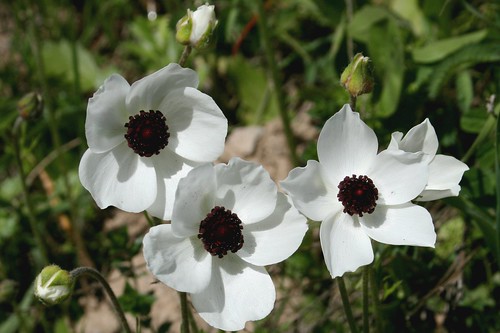
Ranunculus asiaticus, white form at Paleochora












Recent Comments